|
Books Should Be Free Loyal Books Free Public Domain Audiobooks & eBook Downloads |
|
|
Books Should Be Free Loyal Books Free Public Domain Audiobooks & eBook Downloads |
|
Myths and Legends |
|---|
|
Book type:
Sort by:
View by:
|
By: Charles Alexander Eastman (1858-1939) | |
|---|---|
 The Soul of the Indian
The Soul of the Indian
"We also have a religion which was given to our forefathers, and has been handed down to us their children. It teaches us to be thankful, to be united, and to love one another! We never quarrel about religion." | |
By: T. F. Thiselton Dyer (1848-1923) | |
|---|---|
 Strange Pages from Family Papers
Strange Pages from Family Papers
“Among other qualities which have been supposed to belong to a dead man’s hand, are its medicinal virtues, in connection with which may be mentioned the famous ‘dead hand,’ which was, in years past, kept at Bryn Hall, Lancashire… Thus the case is related of a woman who, attacked with the smallpox, had this dead hand in bed with her every night for six weeks, and of a poor lad living near Manchester who was touched with it for the cure of scrofulous sores.” Though not all chapters have such gruesome subjects as The Dead Hand, all are full of a curious mixture of superstition and local history that will delight and amuse the modern listener. | |
By: Cyrus Macmillan | |
|---|---|
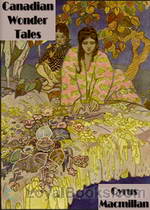 Canadian Wonder Tales
Canadian Wonder Tales
This is a collection of folk tales originating in Canada, some from aboriginal oral tradition and others due to early French, Scottish, Irish and British colonists. They are presented as “fables” though many are without obvious moral. | |
By: S. Baring-Gould (1834-1924) | |
|---|---|
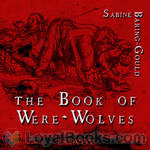 The Book of Werewolves: Being an Account of a Terrible Superstition
The Book of Werewolves: Being an Account of a Terrible Superstition
A survey of the myths and legends concerning lycanthropy from ancient times to the Victorian Era. | |
By: Ignatius Loyola Donnelly (1831-1901) | |
|---|---|
 Atlantis: The Antediluvian World
Atlantis: The Antediluvian World
"Atlantis: The Antediluvian World is a book published during 1882 by Minnesota populist politician Ignatius L. Donnelly, who was born in Philadelphia, Pennsylvania during 1831. Donnelly considered Plato's account of Atlantis as largely factual and attempted to establish that all known ancient civilizations were descended from this supposed lost land. Many of its theories are the source of many modern-day concepts we have about Atlantis, like the civilization and technology beyond its time, the origins of all present races and civilizations, a civil war between good and evil, etc." | |
By: Hamilton Wright Mabie (1846-1916) | |
|---|---|
 Myths That Every Child Should Know
Myths That Every Child Should Know
A selection of famous and timeless myths, adapted for a junior audience. | |
By: Ruth Plumly Thompson (1891-1976) | |
|---|---|
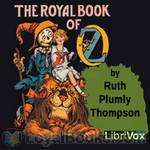 The Royal Book of Oz
The Royal Book of Oz
The Royal Book of Oz (1921) is the fifteenth in the series of Oz books, and the first to be written by Ruth Plumly Thompson after L. Frank Baum’s death. Although Baum was credited as the author, it was written entirely by Thompson. The Scarecrow is upset when Professor Wogglebug tells him that he has no family, so he goes to where Dorothy Gale found him to trace his “roots.” Then he vanishes from the face of Oz. Dorothy and the Cowardly Lion mount a search for their friend, but when that is successful, they will need to become a rescue party! | |
By: Peter Christen Asbjørnsen (1812-1885) | |
|---|---|
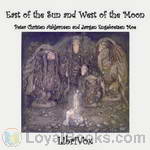 East of the Sun and West of the Moon
East of the Sun and West of the Moon
Once on a time there was a poor husbandman who had so many children that he hadn’t much of either food or clothing to give them. Pretty children they all were, but the prettiest was the youngest daughter, who was so lovely there was no end to her loveliness.So one day, ’twas on a Thursday evening late at the fall of the year, the weather was so wild and rough outside, and it was so cruelly dark, and rain fell and wind blew, till the walls of the cottage shook again. There they all sat round the fire, busy with this thing and that... | |
By: Nennius | |
|---|---|
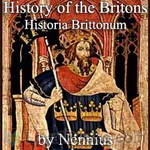 History of the Britons (Historia Brittonum)
History of the Britons (Historia Brittonum)
Although the origin of this book is much debated it remains, perhaps, one of the earliest recorded histories of Britain. It was believed that Nennius wrote the book around 796AD. If indeed he wrote this record, Nennius is recognised as being a teller, and embellisher, of historic characters and events.This book remains notable however, as one of the earliest that mention Arthur (The King of Arthurian legend). | |
By: Donald Alexander Mackenzie (1873-1936) | |
|---|---|
 Myths and Legends: Myths of Babylonia and Assyria
Myths and Legends: Myths of Babylonia and Assyria
Donald Alexander Mackenzie was a Scottish journalist and prolific writer on religion, mythology and anthropology in the early 20th century. His works included Indian Myth and Legend, Celtic Folklore and Myths of China and Japan.As well as writing books, articles and poems, he often gave lectures, and also broadcast talks on Celtic mythology.This volume deals with the myths and legends of Babylonia and Assyria, and as these reflect the civilization in which they developed, a historical narrative has been provided, beginning with the early Sumerian Age and concluding with the periods of the Persian and Grecian Empires... | |
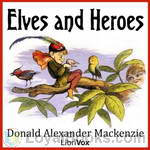 Elves and Heroes
Elves and Heroes
This volume describes, in verse, the mythical creatures and people of ancient Scotland. It also includes explanatory notes about about the characters and folk tales that inspired the author's poetry. (Introduction by Matthew Reece) | |
By: Richard Harris Barham (1788-1845) | |
|---|---|
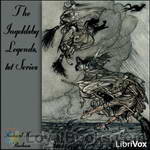 The Ingoldsby Legends, 1st Series
The Ingoldsby Legends, 1st Series
The Ingoldsby Legends are a collection of myths, legends, ghost stories and poetry supposedly written by Thomas Ingoldsby of Tappington Manor, actually a pen-name of Richard Harris Barham.The legends were first printed in 1837 as a regular series in Bentley's Miscellany and later in New Monthly Magazine. The legends were illustrated by John Leech and George Cruikshank. They proved immensely popular and were compiled into books published in 1840, 1842 and 1847 by Richard Bentley. They remained popular through the Victorian era but have since fallen out of fame. An omnibus edition appeared in 1879: The Ingoldsby Legends; or Mirth and marvels. | |
By: Alfred, Lord Tennyson (1809-1892) | |
|---|---|
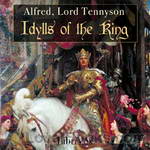 Idylls of the King
Idylls of the King
Idylls of the King, published between 1856 and 1885, is a cycle of twelve narrative poems by the English poet Alfred, Lord Tennyson which retells the legend of King Arthur, his knights, his love for Guinevere and her tragic betrayal of him, and the rise and fall of Arthur's kingdom. The whole work recounts Arthur's attempt and failure to lift up mankind and create a perfect kingdom, from his coming to power to his death at the hands of the traitor Mordred. Individual poems detail the deeds of various knights, including Lancelot, Geraint, Galahad, and Balin and Balan, and also Merlin and the Lady of the Lake. | |
By: Charles Goddard and Paul Dicky | |
|---|---|
 The Ghost Breaker
The Ghost Breaker
The Ghost Breaker is a drama and haunted house horror complete with heroes, villains, and a Princess. The Ghost Breaker was originally a screenplay and would later be made a drama film directed by Cecil B. DeMille. | |
By: Mary Macleod (?/?) | |
|---|---|
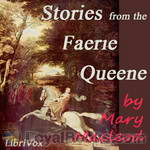 Stories from the Faerie Queene
Stories from the Faerie Queene
"The object of this volume is to excite interest in one of the greatest poems of English literature, which for all its greatness is but little read and known--to excite this interest not only in young persons who are not yet able to read "The Faerie Queene," with its archaisms of language, its distant ways and habits of life and thought, its exquisite melodies that only a cultivated ear can catch and appreciate, but also in adults." (From the Author's introduction) | |
By: Jean Racine (1639-1699) | |
|---|---|
 Phaedra
Phaedra
In the court of Louis XIV, adaptations of Greek tragedies were very popular. This play, heavily influenced by Euripides' Hippolytus, deals with love that violates social taboos. Note: In Racine's work, a new "scene" begins whenever a character enters or exits. Therefore, there are no stage directions, only a list of the characters on stage for each scene. The action is continuous for the entire act. | |
By: Howard R. Garis (1873-1962) | |
|---|---|
 Curly and Floppy Twistytail (The Funny Piggie Boys)
Curly and Floppy Twistytail (The Funny Piggie Boys)
The adventures of two little pig boys and their mom and dad. "Once upon a time, not so very many years ago, in the days when there were fairies and giants and all things like that, there lived in a little house, on the edge of a wood, a family of pigs. Now these pigs weren't like the pigs, which perhaps you children have seen on most farms. No, indeed! They were just the nicest cleanest, sweetest pigs you ever dreamed of—not that pigs on a farm can't be clean, if they want to, but, somehow or other, no one seems to have time to see that they are clean." | |
By: William Ralston Shedden-Ralston (1828-1889) | |
|---|---|
 Russian Fairy Tales
Russian Fairy Tales
Russian Fairy Tales is an anthology of stories by a noted Russian scholar and translator. The 51 stories are thematically organized with introductory material to put them both in the context of Russian folklore and in their relation to the myths of other cultures. This text has something for the intellectual reader as well as for someone who just likes a good fairy tale. | |
By: Daniel G. Brinton (1837-1899) | |
|---|---|
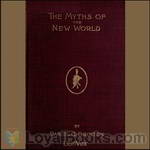 The Myths of the New World
The Myths of the New World
The Myths of the New World's full title describes it as.. " a treatise on the Symbolism and Mythology of the Red Race of America", an attempt to analyse and correlate scientifically, the mythology of the American Indians. Note: Brinton advocated theories of scientific racism that were pervasive at that time. | |
By: Dinah Maria Mulock Craik (1826-1887) | |
|---|---|
 Fairy Book
Fairy Book
The sleeping beauty in the wood -- Hop-O'-My-Thumb -- Cinderella; or, the little glass slipper -- Adventures of John Dietrich -- Beauty and the Beast -- Little One Eye, Little Two Eyes, and Little Three Eyes -- Jack the giant-killer -- Tom Thumb -- Rumpelstilzchen -- Fortunatus -- The Bremen Town Musicians -- Riquet with the tuft -- House Island -- Snow-White and Rose-Red -- Jack and the bean-stalk -- Graciosa and Percinet -- The iron stove -- The invisible prince -- The woodcutter's daughter --... | |
By: Lord George Gordon Byron (1788-1824) | |
|---|---|
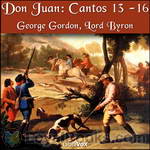 Don Juan, Cantos 13 -16
Don Juan, Cantos 13 -16
These are the last four Cantos of his mock epic that Byron completed in the year before his death at the age of 36 in Messolonghi, Greece, where he had gone to fight for the nationalists against the Ottoman Empire. Juan, now in England, is invited to spend the autumn with a hunting party at the ancient country seat of Lord Henry and Lady Adeline Amundeville. There, he meets the most intriguing of the Byronic heroines, Aurora Raby, and is visited by a ghost with ample breasts (!). That is the narrative outline but hardly the focus of the last Cantos... | |
By: Lord Redesdale (1837-1916) | |
|---|---|
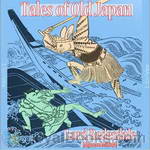 Tales of Old Japan
Tales of Old Japan
Tales of Old Japan by Lord Redesdale is a collection of short stories focusing on Japanese life of the Edo period (1603 - 1868). It contains a number of classic Japanese stories, fairy tales, and other folklore; as well as Japanese sermons and non-fiction pieces on special ceremonies in Japanese life, such as marriage and harakiri, as observed by Lord Redesdale. The best know story of these is "The Forty-seven Ronins" a true account of samurai revenge as it happened at the beginning of 18th century Japan... | |
By: Marie de France | |
|---|---|
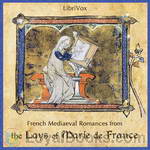 French Mediaeval Romances from the Lays of Marie de France
French Mediaeval Romances from the Lays of Marie de France
The tales included in this little book of translations are derived mainly from the "Lays" of Marie de France. I do not profess them to be a complete collection of her stories in verse. The ascription varies. Poems which were included in her work but yesterday are withdrawn to-day, and new matter suggested by scholars to take the place of the old. I believe it to be, however, a far fuller version of Marie's "Lays" than has yet appeared, to my knowledge, in English. Marie's poems are concerned chiefly with love... | |
By: Edric Vredenberg (1860-?) | |
|---|---|
 My Book Of Favourite Fairy Tales
My Book Of Favourite Fairy Tales
This is a collection on well-known, favorite fairy stories, most of which we all grew up with. They were edited and retold in this volume. | |
By: Florence Holbrook (1860-1932) | |
|---|---|
 Book of Nature Myths
Book of Nature Myths
This is a book of myths told by the Indians of North America to their children. They could be compared to present day Fairy Tales. | |
By: Apollonius Rhodius (3rd Cent. -3rd Cent.) | |
|---|---|
 Argonautica
Argonautica
The story of how Jason and a group of famous heroes of Greece took to sea in the Argos has been told many times, before and after Apollonius of Rhodes, wrote his Argonautica, in the 3rd century b.C.. It is not only the oldest full version of the tale to arrive to our days, but also the only extant example of Hellenistic epic. This was already a popular myth by the times of Apollonius, who makes the story of how Jason and the Argonauts sail to Colchis in search of the Golden Fleece, and have to go through a lot of adventures to fulfill their task, a mix of simple narrative and scholarly catalog. The Argonautica had a deep impact on European literature as a whole. | |
By: Joseph Jacobs (1854-1916) | |
|---|---|
 More English Fairy Tales
More English Fairy Tales
"This volume will come, I fancy, as a surprise both to my brother folk-lorists and to the public in general. It might naturally have been thought that my former volume (English Fairy Tales) had almost exhausted the scanty remains of the traditional folk-tales of England. Yet I shall be much disappointed if the present collection is not found to surpass the former in interest and vivacity, while for the most part it goes over hitherto untrodden ground, the majority of the tales in this book have either never appeared before, or have never been brought between the same boards." | |
By: Alice Gerstenberg (1885-1972) | |
|---|---|
 Alice in Wonderland (Drama)
Alice in Wonderland (Drama)
A dramatization of Lewis Carroll’s Alice’s Adventures in Wonderland and Through the Looking Glass for the stage. In this version, Alice goes through the looking glass and encounters a variety of strange and wonderful creatures from favorite scenes of Alice's Adventures in Wonderland the Through the Looking Glass. Including a conversation with the Red and White Queens, encounters with Humpty Dumpty, the Mock Turtle, the Cheshire Cat, and the Caterpillar, and of course everyone's favorite Mad Tea Party. | |
By: William Scott-Elliot (?-1930) | |
|---|---|
 Story of Atlantis and the Lost Lemuria
Story of Atlantis and the Lost Lemuria
This volume contains two publications by W. Scott-Elliot, namely The Story of Atlantis (1896) and The Lost Lemuria (1904). A theosophist and believer of the Occult, W. Scott-Elliot gives us a description of the history and structure of Atlantis and Lemuria, along with what he considers evidence of this. The Story of Atlantis is prefaced by Alfred Percy Sinnett. | |
By: Augusta Stevenson (1869-1976) | |
|---|---|
 Children's Classics in Dramatic Form
Children's Classics in Dramatic Form
| |
By: Paul Creswick (1866-1947) | |
|---|---|
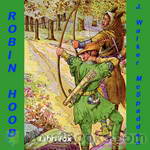 Robin Hood
Robin Hood
"Well, Robin, on what folly do you employ yourself? Do you cut sticks for our fire o' mornings?" Thus spoke Master Hugh Fitzooth, King's Ranger of the Forest at Locksley, as he entered his house.Robin flushed a little. "These are arrows, sir," he announced, holding one up for inspection.Dame Fitzooth smiled upon the boy as she rose to meet her lord. "What fortune do you bring us to-day, father?" asked she, cheerily.Fitzooth's face was a mask of discontent. "I bring myself, dame," answered he, "neither more nor less... | |
By: A. J. Glinski (1817-1866) | |
|---|---|
 Polish Fairy Tales
Polish Fairy Tales
These are selections from a large collection made by A. J. Glinski, printed at Wilna in 1862. These fairy tales come from a far past and may even date from primitive times. They represent the folklore current among the peasantry of the Eastern provinces of Poland, and also in those provinces usually known as White Russia. They were set down by Glinski just as they were related to him by the peasants. In the translation it was of course necessary to shorten them considerably; the continual repetition—however quaint and fascinating in the original—cannot easily be reproduced... | |